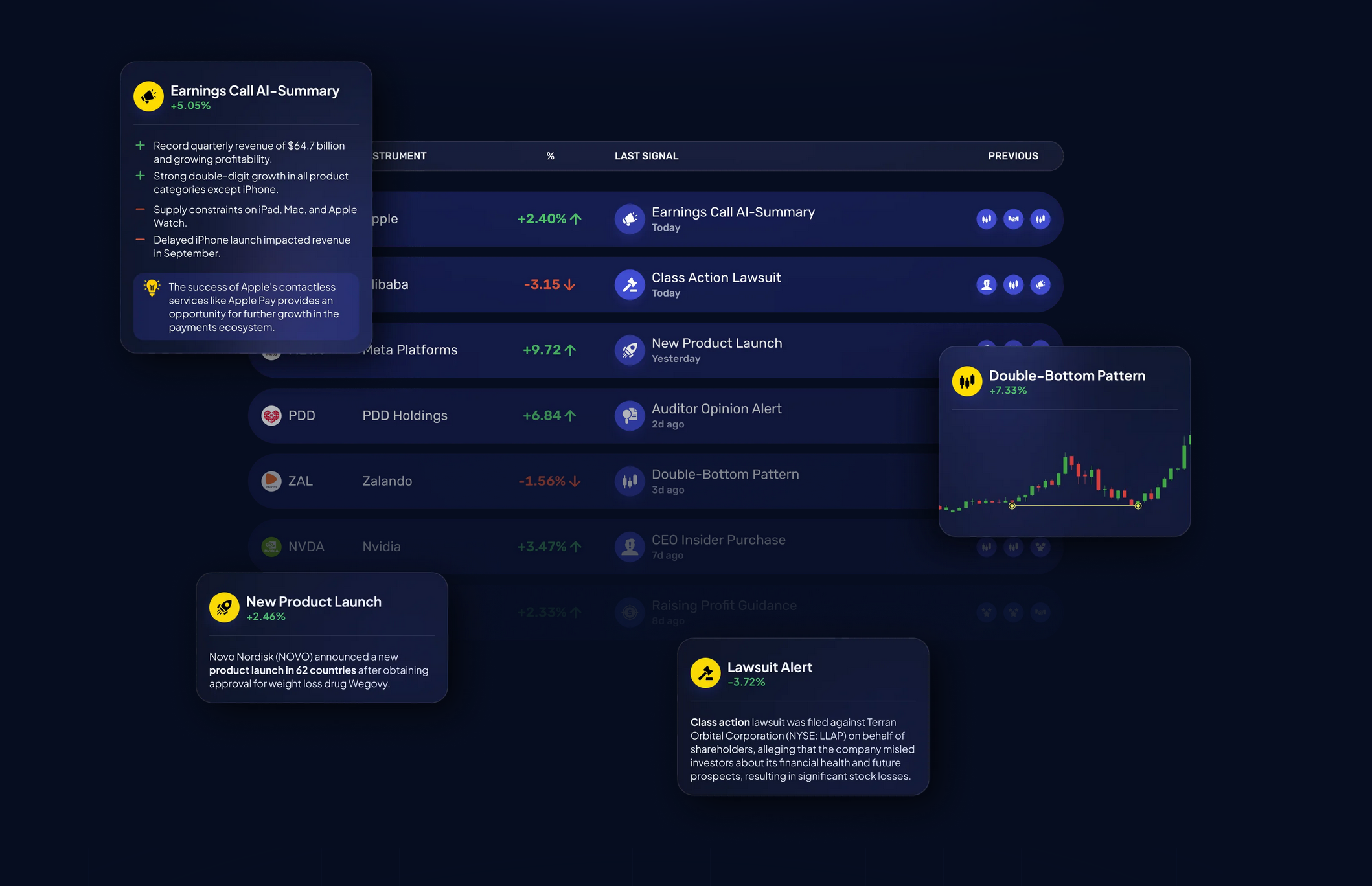Top 10 Tips For Assessing The Ai And Machine Learning Models In Ai Trading Platforms For Stock Prediction And Analysis.
The AI and machine (ML) model used by the stock trading platforms and prediction platforms should be evaluated to ensure that the insights they provide are precise, reliable, relevant, and applicable. Models that are not properly designed or overhyped could result in financial losses as well as inaccurate forecasts. Here are ten of the most useful tips to help you evaluate the AI/ML model of these platforms.
1. Know the reason behind the model as well as the way to apply it.
The goal must be determined. Determine whether the model has been developed to allow for long-term investments or trading in the short-term.
Algorithm disclosure: Determine whether the platform has disclosed which algorithms it uses (e.g. neural networks or reinforcement learning).
Customizability: Find out if the model can be adapted to your particular trading strategy or your tolerance to risk.
2. Assess Model Performance Metrics
Accuracy: Check the model’s accuracy in the prediction of the future. However, do not solely use this measure because it could be misleading when used with financial markets.
Precision and recall: Evaluate whether the model is able to identify true positives (e.g. accurately forecasted price moves) and minimizes false positives.
Risk-adjusted returns: Determine if the model’s predictions yield profitable trades following accounting for risk (e.g., Sharpe ratio, Sortino ratio).
3. Make sure you test the model using Backtesting
Historical performance: Use the historical data to backtest the model and assess how it would have performed under the conditions of the market in the past.
Testing outside of sample: Make sure your model has been tested with data that it wasn’t developed on in order to prevent overfitting.
Scenario analysis: Test the model’s performance in different market conditions (e.g. bear markets, bull markets and high volatility).
4. Make sure you check for overfitting
Signals that are overfitting: Search for models that perform exceptionally well on data training but poorly on data that isn’t seen.
Regularization: Check whether the platform employs regularization techniques, such as L1/L2 or dropouts in order to prevent overfitting.
Cross-validation. The platform must perform cross validation to test the generalizability of the model.
5. Evaluation Feature Engineering
Relevant Features: Look to see if the model has significant characteristics. (e.g. volume and technical indicators, prices as well as sentiment data).
Select features: Make sure you only choose statistically significant features and doesn’t include irrelevant or irrelevant data.
Updates to dynamic features: Check if the model adapts to changes in characteristics or market conditions over time.
6. Evaluate Model Explainability
Interpretation: Make sure the model is clear in explaining its predictions (e.g., SHAP values, feature importance).
Black-box models are not explainable Beware of systems with complex algorithms, such as deep neural networks.
User-friendly insights: Find out whether the platform is able to provide relevant insights to traders in a way that they are able to comprehend.
7. Examining the model Adaptability
Market changes: Determine if the model is able to adapt to new market conditions, like economic shifts or black swans.
Continuous learning: Determine whether the platform is continuously updating the model with new data. This can improve performance.
Feedback loops: Ensure that the platform is able to incorporate real-world feedback as well as user feedback to improve the model.
8. Be sure to look for Bias during the election.
Data bias: Make sure the information used to train is a true representation of the market and is free of biases.
Model bias: Make sure that the platform monitors the model biases and minimizes them.
Fairness. Check that your model doesn’t unfairly favor specific industries, stocks or trading strategies.
9. Evaluation of Computational Efficiency
Speed: See whether you are able to make predictions by using the model in real time.
Scalability: Find out if the platform is able to handle large datasets with multiple users, and without any performance loss.
Resource usage: Examine to see if your model has been optimized to use efficient computing resources (e.g. GPU/TPU usage).
10. Transparency and accountability
Model documentation: Ensure that the platform has a detailed description of the model’s architecture, training process, and its limitations.
Third-party validation: Find out whether the model has been independently validated or audited by an outside entity.
Error handling: Examine to see if the platform has mechanisms for detecting and correcting model mistakes.
Bonus Tips
Case studies and user reviews Review feedback from users and case studies to gauge the performance of the model in real-life situations.
Trial period – Try the demo or trial version for free to test the models and their predictions.
Support for customers: Make sure your platform has a robust assistance to resolve technical or model-related issues.
By following these tips by following these tips, you will be able to evaluate the AI and ML models used by stocks prediction platforms, making sure they are accurate, transparent, and aligned with your trading goals. Take a look at the most popular chart ai trading assistant for website tips including best AI stock trading bot free, AI stock, ai for stock trading, stock ai, using ai to trade stocks, ai investing app, ai for stock trading, trading ai, AI stock trading bot free, AI stock picker and more.

Top 10 Tips For Evaluating The Scalability Of Ai Analysis And Stock Prediction Platforms
It is important to assess the scalability and performance of AI-driven stock prediction and trading platforms. This will ensure that they can cope with the increasing volume of data in addition to market complexity and demands from users. Here are 10 suggestions for evaluating the scalability.
1. Evaluate Data Handling Capacity
Tips: Ensure that the platform you’re considering is able to handle and analyze large datasets.
Why: Scalable platform must be capable of handling the ever-growing volumes of data with no degradation in performance.
2. Testing Real Time Processing Capabilities
Tips: Make sure you check the platform’s ability to process live information streams, including live stock prices, or breaking stories.
Reason trading decisions are taken in real-time and delays could lead traders to miss out on opportunities.
3. Cloud Infrastructure and Elasticity
Tip: Check whether the platform has the ability to dynamically scale resources and uses cloud infrastructure (e.g. AWS Cloud, Google Cloud, Azure).
Why is that the cloud platform’s elasticity allows the system’s size to change based on use.
4. Algorithm Efficiency
Tip 1: Analyze the computational efficiency of the AI models being used (e.g. reinforcement learning deep learning, etc.).
The reason: Complex algorithms can be resource intensive So optimizing these algorithms is essential to scalability.
5. Examine Distributed and Parallel Computing
Tip: Check if the platform supports parallel processing or distributed computing frameworks (e.g., Apache Spark, Hadoop).
What’s the reason? These technologies provide faster data analysis and processing on multiple nodes.
Review API Integration & Interoperability
Check the platform’s capability to connect external APIs.
The reason: seamless integration means that the platform is adaptable to the changing data sources and trading environments.
7. Analyze User Load Handling
Use a high-traffic simulation to test how the platform responds when under stress.
Why: Scalable platforms should deliver the same quality of service regardless of how many users there are.
8. Examine the the model’s retraining and adaptability
Tip – Assess how frequently the AI model is trained and with what degree of efficiency.
Why? Models have to constantly change to keep up with the ever-changing market in order to remain accurate.
9. Check Fault Tolerance (Fault Tolerance) and Redundancy
Tips. Check that your platform has failover systems and redundancy for hardware orsoftware malfunctions.
The reason Trading is expensive Therefore scaling and fault tolerance are essential.
10. Monitor Cost Efficiency
Tip: Consider the cost of scaling your platform. Consider cloud resources like storage for data and computing power.
What is the reason: The expense of scalability should not be unsustainable. Thus, it’s essential to balance performance and costs.
Bonus Tip Future-Proofing
Assuring that the platform will be able to accommodate emerging technology (e.g. advanced NLP, quantum computing) and regulatory changes.
Focusing on these aspects will enable you to evaluate the scale of AI stock prediction and trading platform and make sure they are durable, efficient and capable of sustaining future expansion. Read the most popular best ai for stock trading for website tips including stock trading ai, ai investment tools, stocks ai, AI stock prediction, best AI stocks to buy now, AI stock investing, stocks ai, AI stock analysis, ai options, chart analysis ai and more.


Leave a Reply